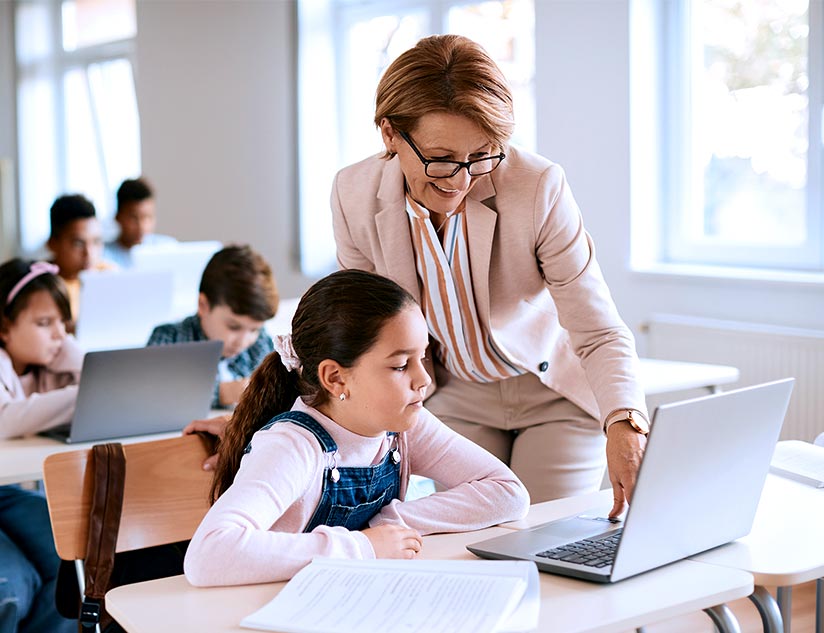Technology has revolutionized all aspects of our lives, including education. The inclusion of technology in the classroom has led to the development of the blended learning approach to teaching. Although the concept of blended learning has been around for some time now, the use of the term only became relevant with the arrival of the internet era in the 1990s.
What is Blended Learning and Teaching?
At the basic level, blended learning is defined as a mix of online learning with traditional brick and mortar classroom teaching. Traditionally, educational content was provided to students through print textbooks and paper handouts. However, in the case of blended learning, around 30%-79% of the content is delivered through online means; while the rest is available in traditional offline formats.
With blended learning, students have a degree of control over the pace, place and time of learning. The different elements are coordinated by the teacher to provide a well-balanced learning path to the student.
Blended learning commonly makes use of tools such as laptops, tablets and smartphones, which are used by the students. The other commonly used tools are learning experience platforms or LXPs. These platforms improve student engagement by incorporating interactive and gaming elements in learning. They also provide the ability to create custom learning paths to students and track their progress with instant assessments.
What We Know About the Effectiveness of Blended Learning Tools, Platforms, Techniques and Strategies
Numerous studies over the past decade have proven the effectiveness of the blended learning approach. In fact, according to a study by the US Department of Education on average, students who were provided blended learning perform better than those who received only face-to-face instructions.
Another study, published in Contemporary Issues In Education Research revealed that students themselves accept that they learn more effectively in a blended learning environment; as compared to the traditional face-to-face and online modes. Another recent study also showed that both engagement and self-regulated learning benefited from a blended approach.
More importantly, a study published in the International Journal of Educational Technology in Higher Education found that a blended approach was more effective than traditional teaching, although learning outcomes depended to a great extent on the quality of the technology used, the online tools and features, and the face-to-face support provided by teachers.
This is where a robust LXP, like MagicBox™ can come to the rescue. Loaded with features for both students and teachers, this learning platform allows teachers to provide just the right support, through detailed analytics on individual students. These analytics include content consumed, learning progress, time taken, and much more. This way, teachers can offer personalized and timely support so that no students are left behind.
For Whom is Blended Learning More Effective?
Although blended learning is beneficial for all types of students, some particular groups of students might find it more advantageous. The students that benefit the most are:
Freshmen and First-Generation Students
Some might think that blended learning can be difficult for students who are first generation learners. This is because the blended approach requires a greater level of self-learning, time management skills and autonomy. However, studies have shown that the blended approach makes transition to a higher level of education much smoother. This is especially true of Gen Z, who are already familiar with seeking information online.
Students with Low Engagement and Motivation
Again, given the need for self-directed, autonomous learning, there might be concerns regarding students who are disengaged with education or unmotivated. However, with the use of LXPs, multimedia and interactive elements can easily be integrated into the lessons. With audio, video, gaming elements, simulations and much more, both engagement and motivation are enhanced. In addition, it becomes easier to make learning collaborative through online message boards and discussion forums. For a generation that thrives on social media, such tools can be extremely beneficial.
Students with Disabilities
The flexibility of blended learning means that education can be provided to a diverse group of students. Blended learning allows the use of interactive and gaming elements in learning. The use of gaming elements has been found to be greatly beneficial for students with ADHD and disruptive behavior. Apart from this, the use of interactive elements also makes learning easy for those with autism. The use of technology, such as text-to-speech, helps students with visual disabilities and dyslexia. In short, the blended approach enhances accessibility of education.
Problems Solved by Blended Learning
Blended learning offers a number of benefits to students as well as teachers, such as:
1. Personalized Learning
In case of blended learning, teachers can easily track the progress of each student with the help of detailed analytics. Such analytics provide key information about learning behavior. This then helps teachers identify students who might be struggling. Teachers can then create personalized learning paths for students.
2. Increased Flexibility
With blended learning, students gain a degree of freedom. They can check out videos of difficult concepts or access course material at a time and place that is most suitable for learning. If a student is struggling, the pace of the lesson can be slowed down. Teachers can also recommend additional content, if required.
3. Improved Engagement
With the use of interactive and gaming elements in blended learning, learning becomes much more fun for students. Information is also provided in bite-sized pieces, making information easy to consume and retain.
4. Detailed Feedback
With blended learning, students get instant and detailed feedback. These are greatly beneficial for students as well as teachers. The feedback gives the students the chance to analyze their performance and problem areas. Teachers can tailor their teaching methods on the basis of these assessments.
There are a number of other benefits provided by blended learning, such as improvement of communication skills and teamwork.
The use of blended learning is becoming almost a necessity in the current era, with millennials and Gen Z expecting technology in all aspects of their life. In fact, a study by Pearson found that Gen Zers prefer learning through videos, rather than physical books. So, to keep education relevant and engaging for the current and future generations, a blended approach might be the right choice.
Are you ready to offer the advantages of blended learning in your educational courses? Contact us today to learn more.















